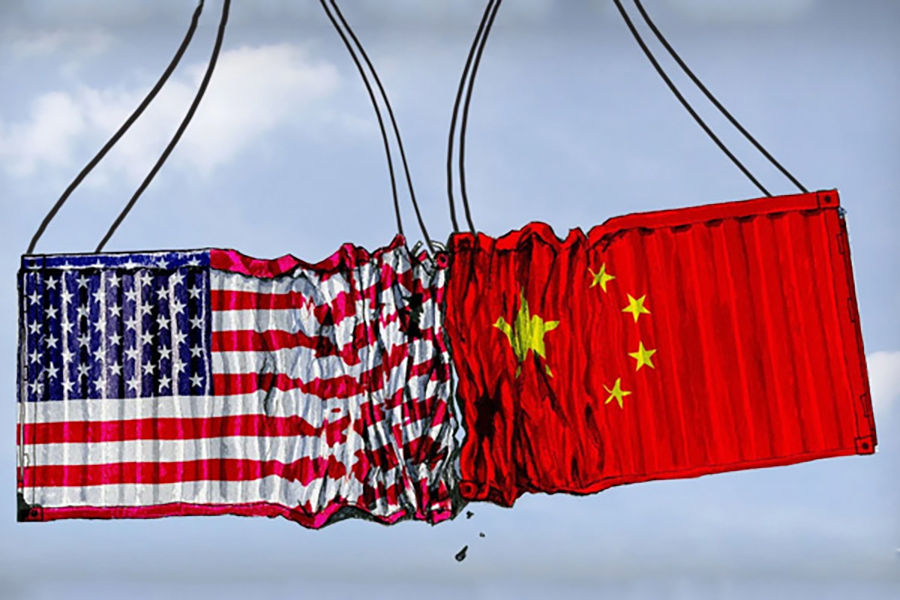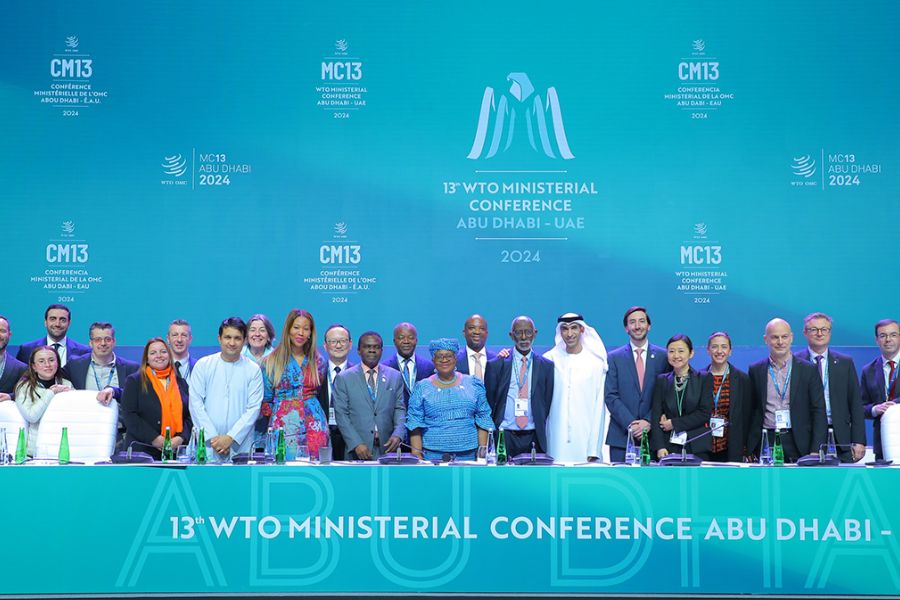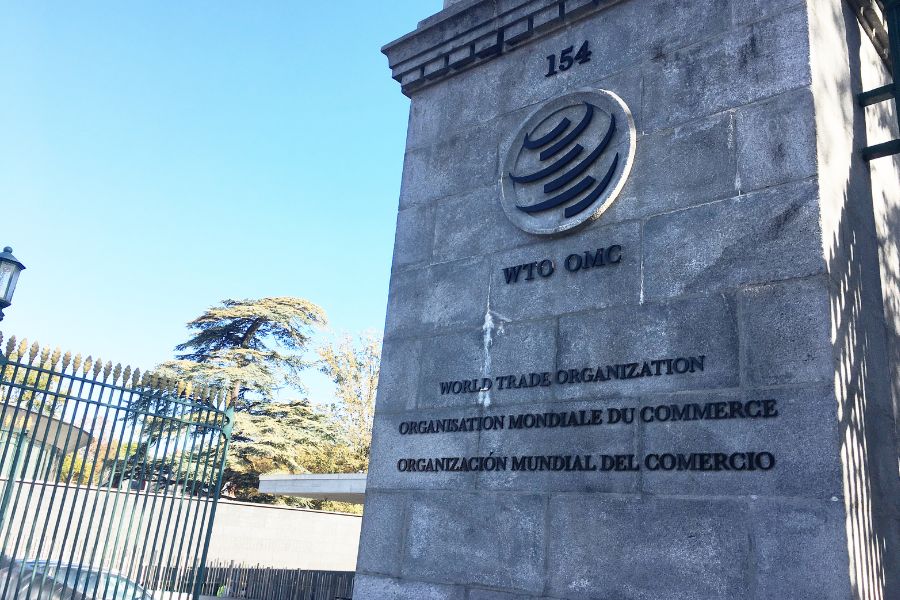Role of IPRs in increasing India’s participation in GVCs
Exports through value chains account for about 70% of global exports. Currently, India is a small player in global value chains (GVCs), smaller than several smaller economies like the Republic of Korea, Malaysia and Russia. Atul Kaushik, Additional Secretary (Retd), Government of India and Vice Chairman, Committee for Advanced Trade Research, TPCI, analyses how, by increasing its share in global value chain exports, India can also increase its share in global exports. Among the determinants of attractiveness of a country towards participation in GVCs, intellectual property rights (IPR) and standards are integral.

Image credit: Shutterstock
Global value chains (GVCs) emerged in the 1980s primarily due to the technology-led wide dispersion of assembly processes. They have grown due to the sourcing of inputs from diverse suppliers located in multiple countries primarily by multinational companies (MNCs) aided by the ICT revolution in the 21st century that made communication cost-effective, without any significant efficiency loss.
Participation in GVCs is driven mainly by structural factors such as geography, size of the market, factor endowment and level of development. Trade and FDI policy, business environment, logistics and customs, infrastructure and quality of institutions also play a role. However, among the determinants of attractiveness of a country towards participation in GVCs, contract enforcement, intellectual property protection (IPR) and standards are key institutional strengths.
GVCs the mainstay of global trade
Like physical (tangible) assets, intangible assets, which may take the form of innovative techniques and technologies, know-how, intellectual property, and knowledge exchange, are shared in a disembodied form with suppliers across the globe. GVCs typically have ‘Lead firms’, usually MNCs, that outsource activities that add little value, while they retain direct control over intangible, high value-added activities.
Intangibles increase the market power of lead firms. Add to that the dynamic advantages arising from network externalities of GVCs and you get increased returns on intangibles with legally enforced proprietary control over standards, technologies, and brands. This is evidenced by the fact that the growth trajectory of GVCs and stronger IP protection almost coincided in the 1990s.
One can gain a better understanding of what generates value in global value chains by quantifying how much income accrues to labour, tangible capital and intangible capital used in global value chain production. A WIPO study finds that the share of intangibles is high –more than double – the share of tangibles for pharmaceutical, chemical and petroleum products. It is also relatively high for food products as well as computer, electronic and optical products. In terms of absolute returns according to this study, the three largest product groups – food products, motor vehicles and textiles – account for close to 50% of the total income generated by intangible capital in the 19 manufacturing global value chains studied.
MNCs have the challenge of picking the right partners for their GVCs to ensure their intangible assets (IPR) are protected and their value preserved for their shareholders. These suppliers acquire technological heft as part of the international networks driven by these MNCs. Such technological knowledge is leveraged by the MNCs in placing their products and services in the buyers’ baskets. As they benefit from these intangible assets in out-performing and out-pricing competitors, they are concerned about protecting these intangible assets.

Image credit: Shutterstock
GVCs and disciplines on IPRs
While intellectual property protection (IPR) or intangibles can be considered an element of quality of institutions as a determinant of GVC participation, it has also been considered an independent determinant. Increased enforcement of IP protection through the Agreement on Trade Related Intellectual Property Rights (TRIPS) of the World Trade Organization (WTO) that came into existence in 1995 has strengthened ways in which GVC partners adhere to rules and minimum standards. Free Trade Agreements (FTAs) have started enhancing protection for IP right holders beyond what is promised in the WTO. For example, US-CAFTA lists the specific treaties in each IP sector (copyrights, patents, trademarks, industrial design, geographical indications etc.). Japan and EU have similar TRIPS plus provisions in their FTAs, as do many recent investment agreements.
It is important to examine this paradigm at the company level. In principle, off-shoring by lead firms of GVCs involves transfer of technological and business knowledge and is therefore subject to various forms of intellectual property, particularly patents, industrial designs, trade secrets and copyrights. Lead firms will be comfortable dealing with their GVC partners so long as they protect these IPRs.
In recent decades some technology-oriented companies have emerged, even in the manufacturing space, which do not have much of physical capital, but their capital is mostly technology, knowledge, and brand value – all intangible assets. For example, in the iPhone X, Apple’s intangible assets embedded in the phone, including the iOS operating system, the design, the Apple logo, and marketing, account for almost 59% of the iPhone’s retail price. Similarly, Nike Inc. captured an average of 43.8% of the value added of its products with its strong brand and aggressive marketing activities (Xing et al 2022). In the process, some manufacturing companies have now become factory less. They depend on stronger value chain linkages, and hence, would like to see that their intangible assets are well protected.
MNCs meet this challenge in various ways like setting up intellectual property licensing business models, legal securities in their relationship with partners, deploying advanced information technology for securing transactions etc. But beyond these steps, they require a favourable investment environment in the countries where their partners operate. This has led to increased intellectual property protection in national jurisdictions. Where such an ecosystem prevails, trade in disembodied intangible assets has increased both between companies and across units and sister agencies of the same company spread across multiple countries.
India: A cog in the wheel?
Exports through value chains account for about 70% of global exports. Countries can therefore increase their exports only through deeper integration with the international production network. India’s performance in exports through GVCs appears to be relatively weak: its share in global exports of goods and services is about 2.1 per cent, whereas its share in GVC exports is only about 1.4 per cent. There is, thus, a possibility that by increasing its share in global value chain exports, it can also increase its share in global exports.

Image credit: Shutterstock
In a 2021 report by the Asian Infrastructure Investment Bank exploring sustaining GVCs pathways for India GVC participation across India will largely rely on a combination of improving infrastructure, strengthening institutional quality and increasing port efficiency, capacity and connectivity with the hinterland. Institutional quality here includes protection of intangible assets.
Currently, India is a small player in GVCs, smaller than several smaller economies like the Republic of Korea, Malaysia and Russia. India’s low GVC participation is reflected in its engagement in only a handful of sectors. Dr Abhijit Sen Gupta, senior economist at the Asian Infrastructure Investment Bank stated that the key products driving India’s GVC participation include coal and petroleum, business services, chemicals, and transport equipment. The automobile industry of India has relatively better developed value chain participation. More recently, Indian mobile phone industry has also experienced substantial value chain integration due to other conducive policy factors and knowledge absorption.
According to a study undertaken by the Harvard Business School in collaboration with the Prime Minister’s Economic Advisory Council released in August 2022, India’s integration into global value chains has dropped over the last five years. Indian exports use relatively few foreign inputs. The limited capacity of domestic suppliers reduces India’s capacity to export. Only Indian IT service exports play a significant role in other countries’ exports, being used by a wide range of foreign industries. Outside of IT, Indian exports tend to serve foreign end demand directly rather than being part of sophisticated global value chains.
India does better in integrating into GVCs through services. India and the US specialise in services embodied in GVCs. India, Kenya and the Philippines specialise in ICT and business service sectors in particular. Services, nevertheless, have become an integral part of the manufacturing global value chains.
According to 2020 World Development Report, India offers a powerful example of how foreign services firms help support greater participation in manufacturing value chains. The pro-competitive reforms in banking, transport, insurance, and telecommunications in India boosted the productivity of both foreign and locally owned manufacturing firms. A one standard deviation increase in the aggregated index of services liberalization resulted in a productivity increase of 11.7% for domestic firms and 13.2% for foreign enterprises. The largest additional effect was for transport reforms, followed by telecommunications and banking reform.
IPRs in GVCs in India
A 2020 study by ICRIER found strong linkage between GVC integration and quality of institutions of which IPR institutions are an important part. For participation and upgrading within value chains, investment in innovation and knowledge-based capital, such as research and development (R&D), intellectual property, software, and data, as well as economic competencies such as organisational know-how and branding, are crucial. Since GVC trade is often associated with transfers of knowledge and technology, protection of IP is a major determinant for many industries.
IPRs are not homogenous intangible assets and protection of all of them may not have similar impacts. Patents and trade secrets are the most discussed IPRs in the literature on GVCs. Typically, patents involve high levels of R&D capital expenditure and inventors need an assurance of return on their investment for incentivizing innovation. Hence, a strong patent regime is considered a sine qua non for engaging a partner in GVCs. While India took time to bring its patent law in compliance with the TRIPS agreement, exercising its right as a developing country to take the full ten-year transition period, by 2005 it brought all the necessary amendments to its Patents Act, 1970.
Trade secrets are like hidden family heirlooms, they are secret only until kept so, and any trade secret holder will engage in a business transaction only after an assurance that its partner will keep the secret intact. In India, trade secrets can be enforced through contract law (Indian Contract Act, 1872). The High Courts of Calcutta (Tata Motors Limited and Another Vs State of West Bengal and Others. Sept 28, 2011) and Bombay (Bombay Dyeing and Manufacturing Co Ltd v Mehar Karan Singh, Aug 24, 2011) in two separate cases dealt with trade secrets and in both the cases the courts have upheld the importance of protection of trade secrets as an important business right for which protection is available under the Contracts Act.
With increased use of software as a service as well as an input in various industries and their GVCs, copyrights have become important for GVCs. Most software developers protect their software features and coding through copyrights. The Indian Copyright Act 1957 has been amended five times, last time in 2012, to bring its provisions in compliance with the WIPO treaties. The Copyright Rules have been amended only last year with a focus on easing compliances by adapting to technological advancements.
India overhauled its Trademark Act, 1958 in 1999 to bring it in compliance with the TRIPS agreement and amended it again in 2010 to participate in the international filing system under the Madrid Protocol. India did not have a law on geographical indications and chose to enact a new law in 1999 rather than provide protection under the trademark law like some countries such as the US, and made rules under it in 2002 and again in 2020 to facilitate easy registration. Trademarks and geographical indications protect IP owner’s brand value. In several sectors including garments and apparels, home appliances and electronics, and commodities like tea and coffee, MNCs retain the brand value, control product design and development, but production takes place elsewhere. This disaggregation and externalisation of production renders these MNCs ‘weightless’, as their main assets are intangible, and they are able to externalise the risks and responsibilities of production to their GVC partners. Conversely, if a lead firm operates through franchises in several markets, the responsibility of protection of brand value is shared by both the MNC and its franchisees.
India replaced its Designs Act 1911 with a new law in 2000 to bring its law in compliance with the TRIPS agreement. The Designs Rules were first notified in 2001 and amended twice in 2008 and 2014 to facilitate ease of registration, including for legal persons and not just natural persons, and again in 2021 to make the rules Start Up compliant. According to a McKinsey report of 2019, MNCs typically factor in the intellectual property charges, including for their industrial designs, in making a determination about where to invest.
Finally, protection of layout designs (topographies) of integrated circuits as an IPR has become obsolete with inventors using other forms of IPRs for better protection. India, however, enacted the Semiconductor Integrated Circuits Layout-Design Act, 2000 to give effect to its TRIPS obligations. The Act protects original semiconductor integrated circuit layout-design and provides for registration period of ten years from the date of filing of an application from registration or from the date of its first commercial exploitation. However, stakeholders have not shown much interest in this, and the arrangement remains largely unutilized, like in other countries.
Role of global capability centres
Over the last three decades, India has emerged as a major R&D hub for MNCs. While it is well known that India has been relatively slow in developing value chain linkages, this trend is quite unique for a developing country and requires a reasonably good IPR regime. Starting with the opening up of its development centre by Texas Instruments in 1885, several large technology-oriented companies have come to India to establish their R&D centres. The development centres of Motorola, Intel, Adobe, and Cisco (among others) demonstrated that cutting-edge technologies and products for the global market can be developed in India with qualified Indian technical professionals. These private R&D development centres now overshadow the network of government R&D centres that dominated the Indian scientific and technological research scenario for decades. These centres have made significant contribution to software development and more generic innovation capabilities in the country. More importantly, many of these centres have been the learning ground for the entrepreneurs behind India’s leading tech start-ups. These centres played a crucial role in developing India’s “techno-preneurs”.

Image credit: Pexels
These development centres which are now generically called Global Capability Centres (GCC), are driving the R&D activities of major corporations of the world. India received a major share of their attention as large multinational enterprises established centres dedicated to design, engineering, or development in the country. While these centres initially started with the cost arbitrage opportunities in mind, over time many of them improved their capabilities and ended up developing cutting edge technologies or products. According to TERI, a related development was the establishment of several local R&D organizations which began operations with contract research assignments, and eventually developed their own capabilities and undertook independent research and developed products.
According to a NASSCOM report, the total number of GCCs in India has increased from 981 in 2010 to 1,250 in 2019. They include back-office IT services, R&D, and engineering services. These centres in India have hardly any links to their own business operations in India; rather they are closely aligned to the corporate need for products for the global market. Reflecting this linkage with their global strategy, the R&D centres in India are contributing significantly to the companies’ creation of intellectual property. In the period 2009-2016, close to 79% of the US patents awarded to inventors in India went to individuals working in these R&D centres. It is noteworthy that while the US continues to put India on the priority watch list in their Super 301 Report, US-based corporations continue to establish and develop R&D centres in India. As a result, US-origin GCCs account for about 70% of the GCCs in India. The same NASSCOM report also noted that IPR-policy-related differences with the US are not a major barrier to expansion and the future evolution of GCCs by US-origin companies in India.
Aligning GVCs & IPRs : The way forward
While many of the technically qualified people working in these centres will gain knowledge and there will be spill over when they move to other organizations or decide to establish their own business units, the MNCs do not see that as a major threat of losing their IPRs and adversely affecting their own business. This indicates their confidence in India’s IPR protection system, despite some weaknesses as can be expected in a country with a huge informal economy.
The patent regime of a country is considered important for integration into GVCs. India has been attracting a large number of foreign patent applications. Although compatible with its international obligations, India maintains more stringent patentability criteria than many other countries, which is considered a dampener by some. However, increased adoption of India as a destination for R&D by several global majors indicates that the technology companies consider India a favourable destination for investment. The challenge is to convert this into integration into existing and future GVCs.
Improvements in enforcement of IPR laws could further strengthen India’s case for integration into GVCs. While appropriate legislation and a responsive judicial infrastructure ensures availability of the mandate to protect IPRs as well as judicial review of administrative decisions, increased oversight for enforcement and rapid dispute settlement will augur well for India to integrate into GVCs. India needs to reduce delays in courts. The closing down of the Intellectual Property Appellate Tribunal has reduced a level of judicial review but added to the challenges in superior courts. However, inclusion of intellectual property related cases in the jurisdiction of Commercial Courts has benefitted IP holders with an additional and cheaper level of courts for settlement of their disputes. The courts in India have taken positions favourable to IPR holders by advising Commercial Courts to use market value of an intangible asset for valuation of suits rather than the stated value for calculation of court fees. This will help trademark holders get relief in these courts. Still, several cases end up in appeals. Hence, India needs to fill the vacancies in High Courts and Supreme Court in a timely manner.
Last, but not the least, the government needs to engage with the industry to allay their concerns, and the relevant stakeholders including the business chambers can play a role in these efforts.
Atul Kaushik is Vice Chairman of the Committee for Advanced Trade Research at TPCI. He retired in 2018 as Additional Secretary, Lok Sabha. His other government assignments include export promotion; bilateral and multilateral trade policy; drafting India’s intellectual property rights (IPRs) laws after India joined the WTO; petroleum and natural gas; climate change; and justice. He has been India’s lawyer to the World Trade Organisation (WTO) and India’s negotiator for IPRs and dispute settlement in the Permanent Mission of India in Geneva.
Beyond his government assignments, he has implemented trade and development projects in Africa, trade capacity building of developing country missions in Geneva, and an Indo-U.S. Triangular Development Partnership program in New Delhi. He has co-edited a book each entitled ‘Reflections from the Frontline: Developing Country Negotiators in the WTO’ and ‘Transforming India – Governance for Aatmanirbhar Bharat’, contributed a dozen book chapters, and several articles in various national and international journals.













Leave a comment